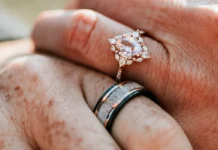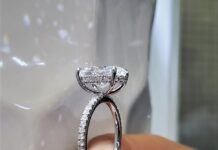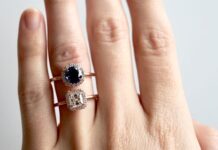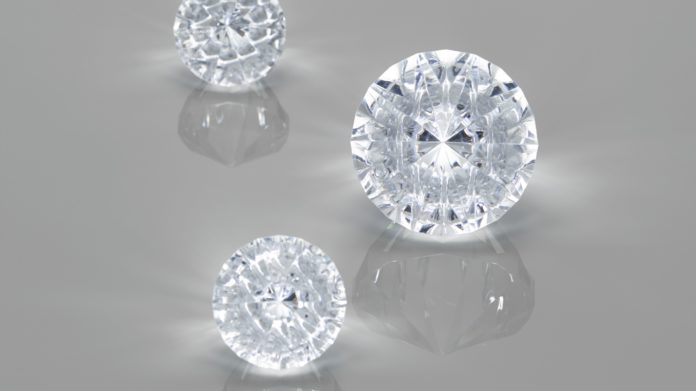
Diamond Color and the Four Cs
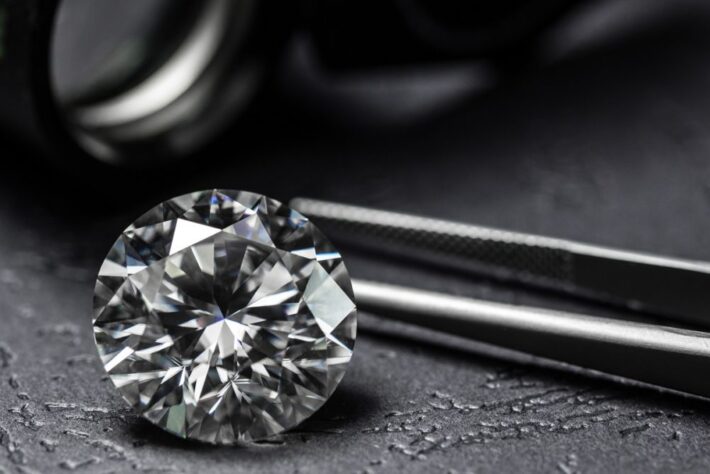
Whether you’re a diamond retailer or are simply interested in jewelry, you must already be acquainted with the Four Cs. The Four Cs in diamond, i.e. Carat, Clarity, Color, and Cut, refer to the four primary factors that determine the overall light- and color-performance of the stone. Consequently, these aspects influence the net value of a diamond.
In brief, the cut of a diamond refers to how the stone is faceted. A diamond cut is often distinguished from its shape in that the cut highlights the performance of a diamond in terms of its facets, polish and general symmetry.
Carat is the unit for measuring the weight of a diamond. One carat equals 0.2 grams.
The clarity of a diamond denotes the extent of blemishes or inclusions in the stone. The more pronounced the blemishes are, the less attractive the diamond is.
And lastly, the color of a diamond refers to the extent of color that’s present in the stone. Different colors deliver different effects on the overall fire and sparkle of the diamond. For instance, diamonds with dense hues give less sparkle compared to colorless diamonds. Therefore, the denser the hues, the lower the fire and sparkle of a diamond, and the less attractive the stone is.
How Is Diamond Color Measured?
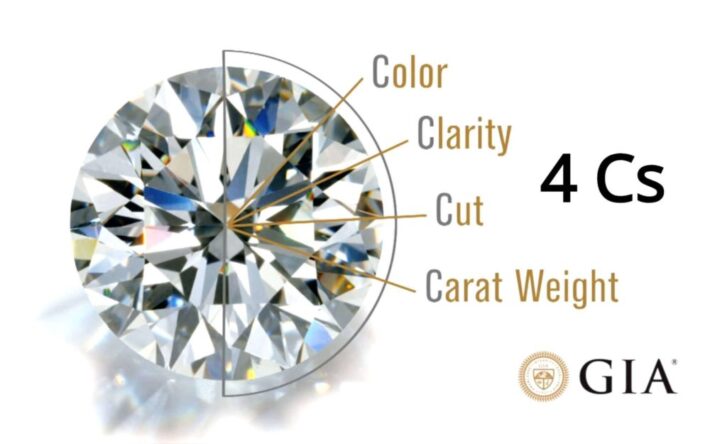
Typically, diamonds are graded depending on how close they are to being colorlessness. In essence, the lesser the color, the higher the value of a diamond. However, fancy color diamonds, such as reds, blues, and pinks, are exceptions to this rule.
Just like all the other aspects of the Four Cs, a diamond color may not always be visible to the naked eye. And this is where a diamond grading report comes in. A diamond grading report is a detailed report that captures all the features of a diamond as analyzed by a reputable gemological laboratory. The report is proof that whatever the vendor says about their merchandise is true.
In the report, you’ll observe that the color of the diamond you intend to buy is denoted by a letter between D and Z. D represents colorless diamonds while Z represent diamonds with fairly visible color hues. Most of the diamonds closest to Z on the diamond color scale are usually brown or light-yellow in color, and are among the world’s most common diamonds. On the contrary, colorless and fancy color diamonds are rarer and, hence, more expensive.
How Each Color Grade Affects the Value of Your Diamond
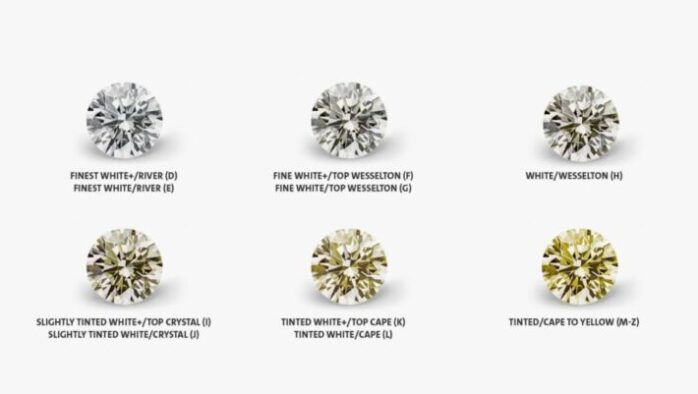
1. Colorless Diamonds
Colorless diamonds are assigned the letters D, E, and F on the diamond color scale. These diamonds have no visible hues at all, whether observed with the naked eye or under a gemological microscope.
Also, colorless diamonds produce the highest fire and sparkle, which makes them the most expensive. Under this range, D-graded diamonds are more expensive than E and F diamonds.
2. Nearly-Colorless Diamonds
This range includes diamonds that are graded with letters G, H, I, and J. Near-colorless diamonds often appear colorless when observed from a face-up angle. However, they can reveal slight tints of yellow if you view them from the sides.
Near-colorless diamonds are also relatively costly. They’re the most preferred choice for ring settings. That’s because when mounted on a ring, you won’t be able to view the diamond’s yellow tints from the sides, as the ring hides all the tint. Provided that you have a decent ring mounting, diamonds ranging from G to J can be a very economical investment.
3. Faint Tint Diamonds
Faint-tint diamonds are represented with letters K, L, and M. These diamonds reveal a slight tint of color when viewed from the top of the table. Faint tint diamonds are valued lower than their nearly-colorless counterparts.
To hide the color hues, you might consider mounting a faint tint diamond on yellow gold ring settings. That way, the diamond’s undesirable tints will be overshadowed by the elegant yellow gold color.
4. Very Light Tint
Very light tint diamonds cover a range between N and R on the diamond color scale. Unlike faint tint diamonds where the yellow hues are only slightly visible, diamonds graded between N and R have more noticeable shades of yellow. And that also reflects on their final price.
Very light tint diamonds are considerably rare to. But their rarity has nothing to do with their being cost-inhibitive. On the contrary, it has everything to do with the low demand for them.
5. Light Tints Diamonds
Light Tint diamonds score between letters S and Z on the color scale. These diamonds have tints that can be viewed from a relatively long distance, both from the sides as well as from the top of the table.
The presence of more pronounced color hues adversely impacts the value of light tint diamonds. Diamonds in this range are the cheapest. Also, their values do not change significantly, whether they exist as loose diamonds or mounted on a ring.
Popular Diamond Colors and Their Relative Costs
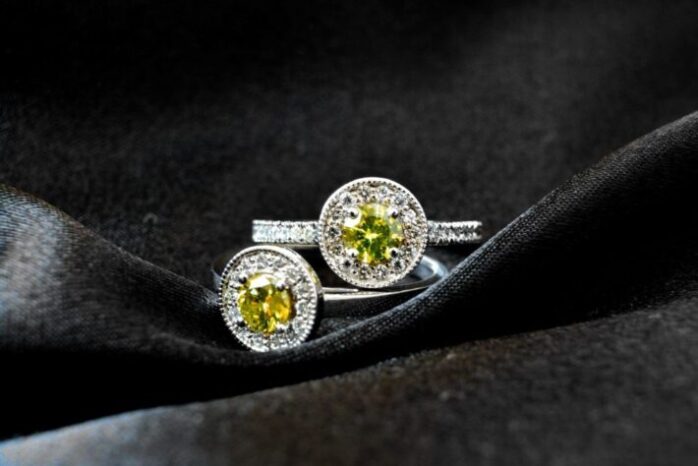
While the diamond color scale only ranges from D to Z, there are hundreds of possible diamond colors out there. With the advent of lab-grown diamonds, it became exceedingly easy to develop diamonds that mimic the colors and characteristics of naturally-occurring gemstones. Another advantage of developing diamonds in the lab, according to diamondbuild.co.uk, is that gemologists can experiment with more fancy colors, depending on the prevailing market demands.
But if you’re planning to buy a diamond for the first time, it’s unlikely that you’ll go analyzing the different shades of the same color. For a novice shopper, it doesn’t make so much of a difference between light yellow and dark yellow. Your primary interest is getting an overview of how one basic color fares against the others in terms of value and price.
As we’ve already mentioned, colorless diamonds will invariably cost you more than most colored stones. When it comes to colored diamonds, brown, grey, and fancy yellow diamonds are the most affordable. They’re closely followed by intense and vivid orange and yellow diamonds. Coming third are purple, violet, green, blue, and pink diamonds. And the most expensive diamond color is red.
Does Diamond Color Really Matter?
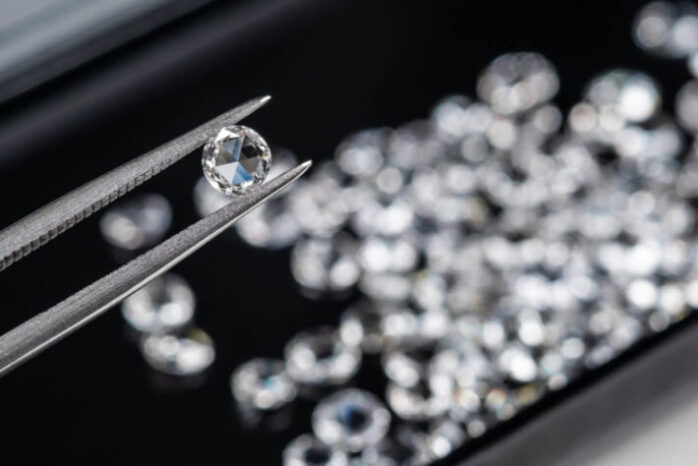
It’s indeed true that color impacts the fire and sparkle of a diamond, which subsequently determines the net value of the stone. However, experts discourage choosing a diamond purely based on color considerations. Instead, you should first consider the other aspects of the Four Cs.
For instance, a subtle increase in the size and weight of a diamond causes an exponential change in the sparkle and brilliance of the stone. Similarly, how a diamond is cut and faceted significantly impacts how the stone handles color and light, which affects its overall value.
So, instead of being too fussy about diamond color, you should insist on a higher cut grade and carat weight. That’s if you’re looking for a stone that returns maximum fire, sparkle, and brilliance. Another best practice is to choose a ring setting that accentuates your diamond as opposed to one that conceals its sparkle.

